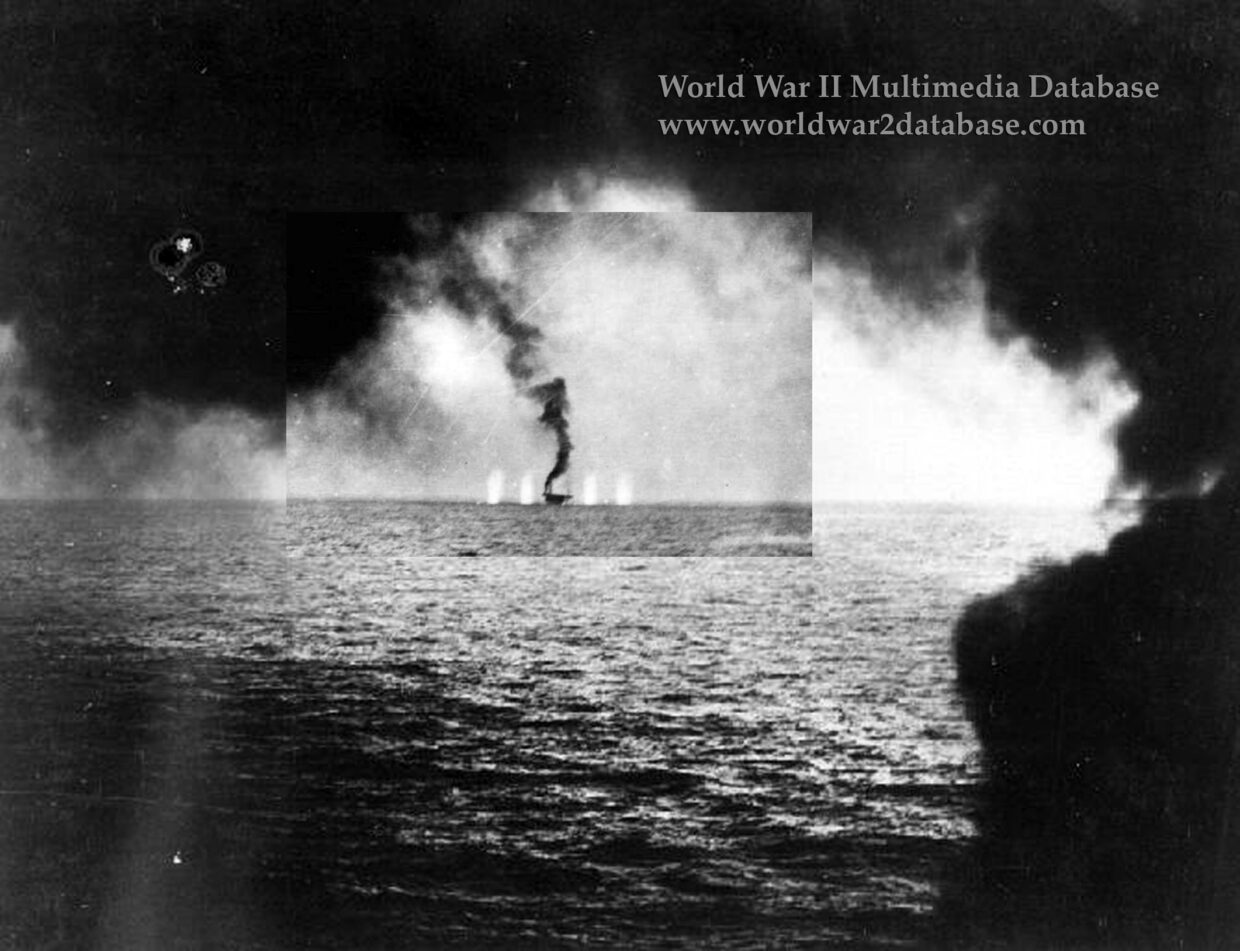| Japanese 8-inch shells from the cruiser Chikuma straddle USS Gambier Bay (CVE-73) after a previous hit disabled the escort carrier and she fell behind the rest of Admiral Clifton Sprague‘s “Taffy 3“ (Task Unit 77.4.3). The lone 5-inch gun of Gambier Bay dueled with a Japanese cruiser. Gambier Bay was soon dead in the water as three cruisers closed to point blank range. Fires raged through the riddled escort carrier. She capsized and sank at 0907 Hours, October 25, 1944 with the majority of her nearly 800 survivors rescued by landing and patrol craft dispatched from Leyte Gulf. Their formation broken up, dodging depth charges, bombs, torpedoes and strafing, Admiral Takeo Kurita ordered his Center Force to withdraw. In Admiral Sprague‘s report from the bridge of his flagship USS Fanshaw Bay (CVE-70): “At 0925 my mind was occupied with dodging torpedoes when near the bridge I heard one of the signalmen yell ‘They‘re getting away!‘ I could hardly believe my eyes, but it looked as if the whole Japanese fleet was indeed retiring. However, it took a whole series of reports from circling planes to convince me. And still I could not get the fact to soak into my battle-numbed brain. At best, I had expected to be swimming by this time.“ Gambier Bay received four battle stars for service in World War II and shared in the award of the Presidential Unit Citation to “Taffy 3“ for extraordinary heroism in the battle off Samar. | |
| Image Filename | wwii1269.jpg |
| Image Size | 473.67 KB |
| Image Dimensions | 2122 x 1628 |
| Photographer | Unknown |
| Photographer Title | |
| Caption Author | Jason McDonald |
| Date Photographed | October 25, 1944 |
| Location | USS Gambier Bay (CVE-73) |
| City | USS Gambier Bay (CVE-73) |
| State or Province | Battle of Leyte Gulf |
| Country | Philippines |
| Archive | United States Navy |
| Record Number | |
| Status | Caption ©2007, ©2024 MFA Productions LLC Image in the Public Domain |

Author of the World War II Multimedia Database

